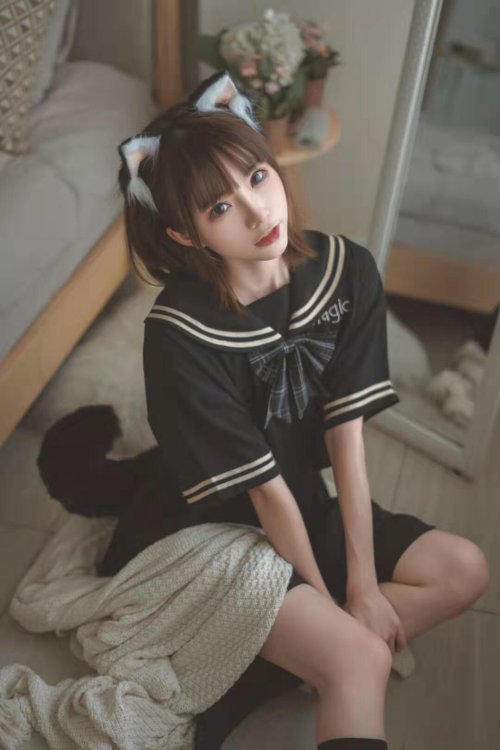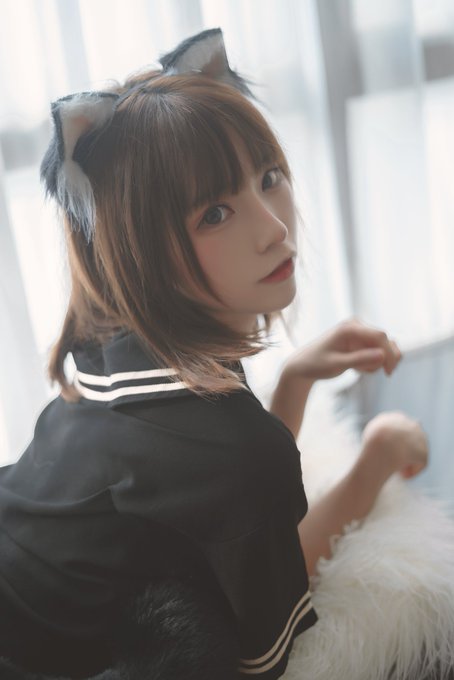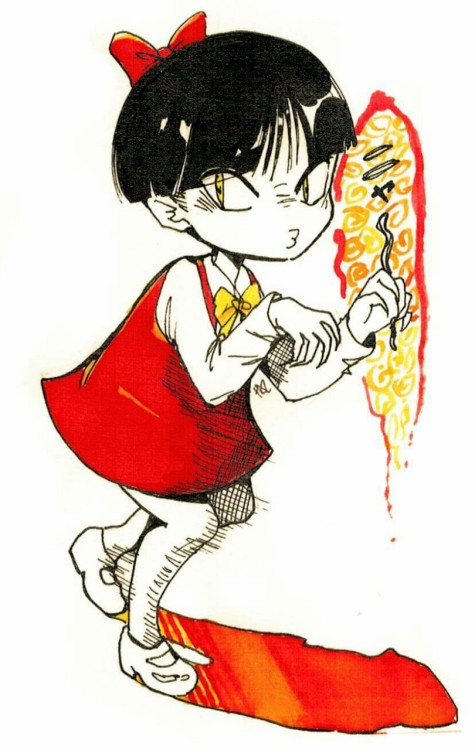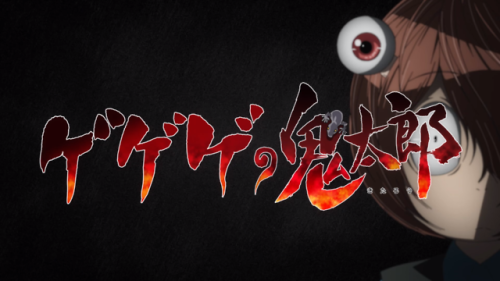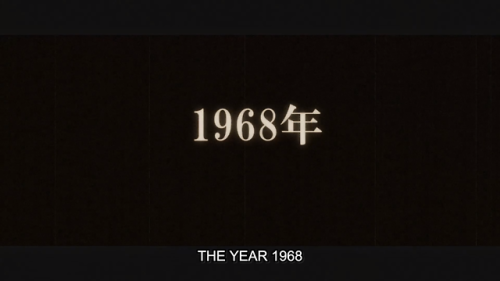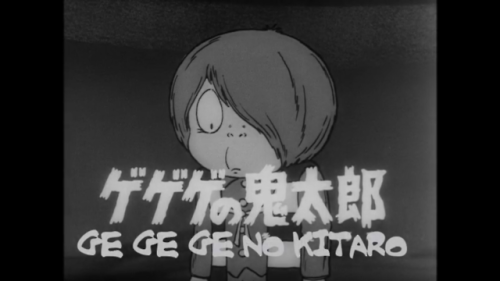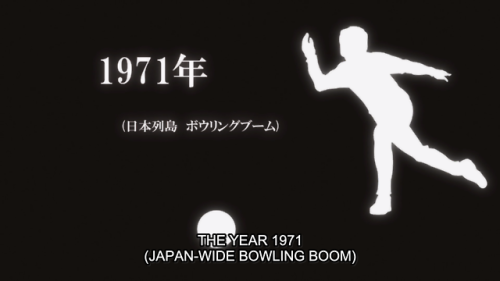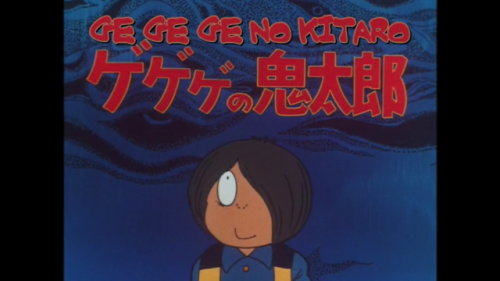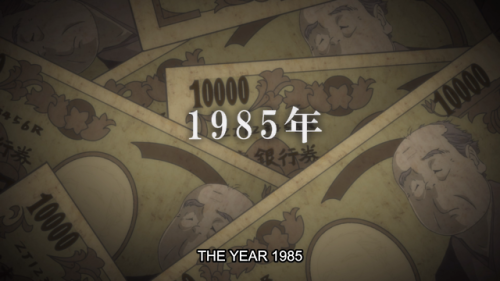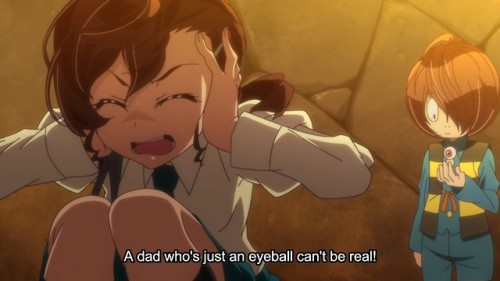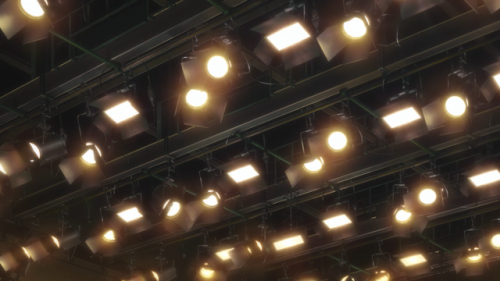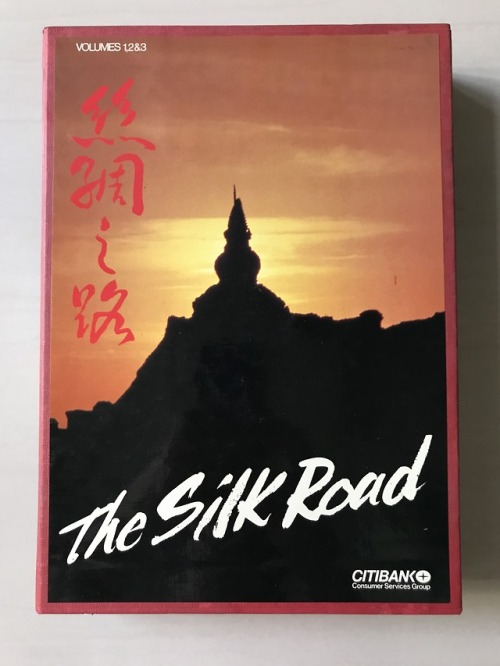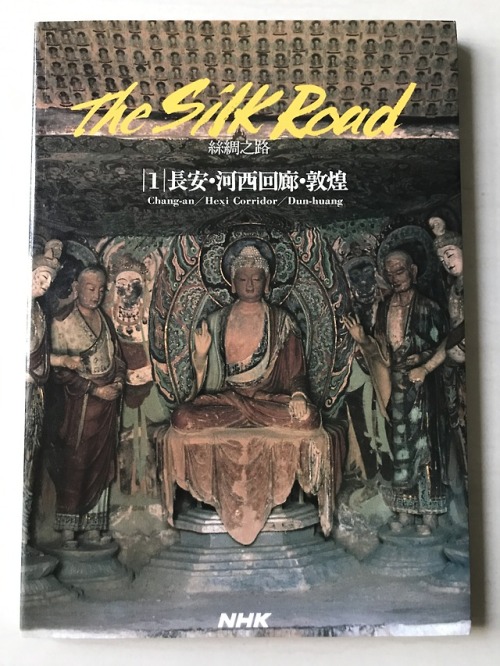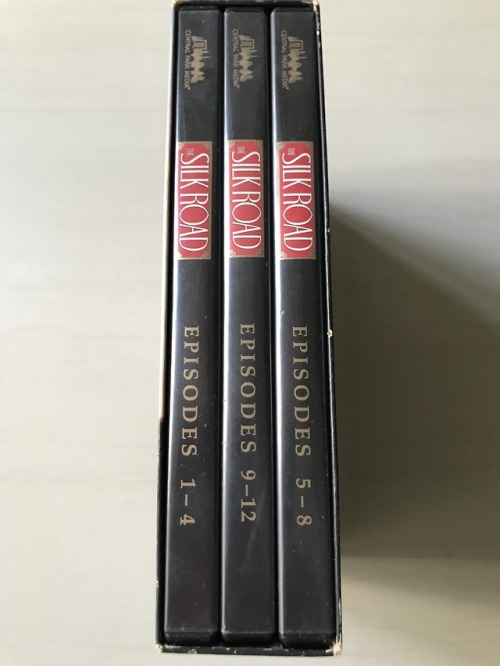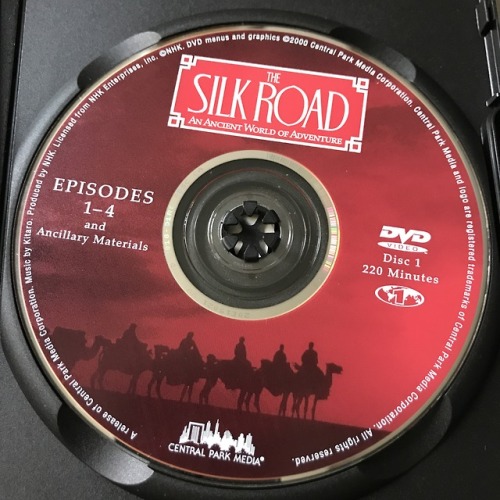#kitaro

This week’s episode of the latest GeGeGe no Kitaro series more than likely left many viewers floored. The writing for the 2018 Kitaro has been incredibly strong and has consistently tackled many issues of our modern day while never once talking down to its intended younger audience or painting a pretty picture–and episode 54: Dorotabo, Life and Earth was no exception.
Coexistence isn’t easy, be it between man and yokai or even man and himself, and there are times when both sides of an argument are both equally right and there is no clear cut answer what to do. These issues are all written beautifully in this episode covering land redevelopment and how it’s claiming more and more of nature’s beauty. Usually a clear cut issue even in past Kitaro series as those jerk humans are ruining nature with their factories and shopping malls and whatnot, but this episode take it a step farther, as the humans are only trying to build a solar power plant to help keep their city alive and yet in the process of their own development are taking away the precious land once dear to Dorotabo.
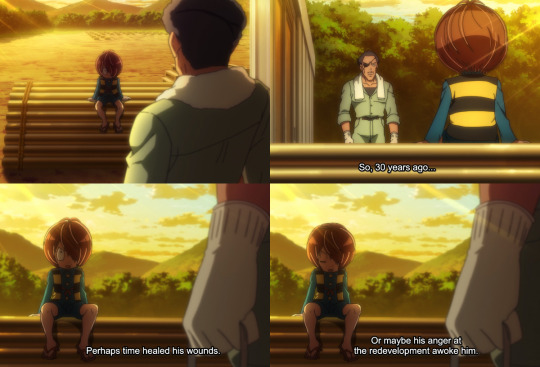
Sharp viewers or perhaps parents that grew up with Kitaro and are now watching with their own kids should be familiar with Dorotabo, as he appeared in the premiere episode of the 1971 GeGeGe no Kitaro series “Return of the Yokai”; the first time Kitaro made his Color TV debut around the nation. This week’s episode becomes a special treat for these fans as it essentially alludes to being a sequel to the original 70’s Kitaro episode when we soon learn this is the second appearance of Dorotabo and Kitaro, who once fought at this very spot some 30 years prior–and although the math isn’t quite perfect there, it still adds an entire extra layer to the episode.
I previously wrote about the 1971 episode briefly in my overview of the past GeGeGe no Kitaro anime series back in October, and was so blown away that this week’s episode was a semi sequel to it. This is not the first time a recent GeGeGe no Kitaro series has served as a sequel to past entries in the franchise, as the previous 2007 series was especially fond of playing on the idea of Kitaro being an unaging child and often had its many “monster-of-the-week” episodes framed as semi sequels to past series and not just simple remakes of older chapters. Heck, this isn’t even the first time in the 2018 series, but it’s definitely always a fun thing to see in the franchise.
Check out some comparisons below while we all look forward to next week’s episode!



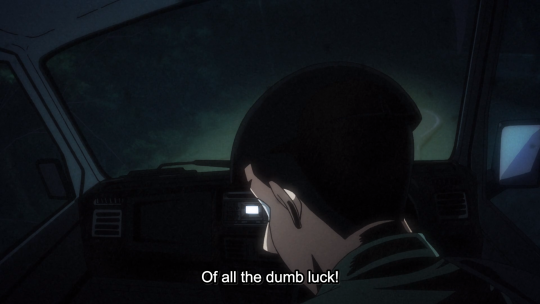

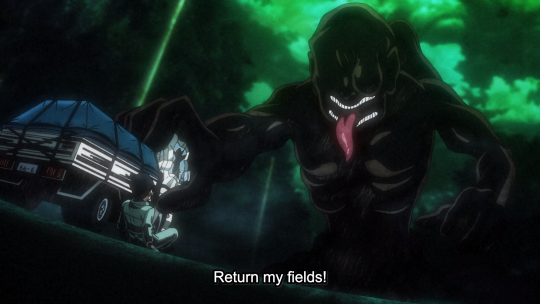
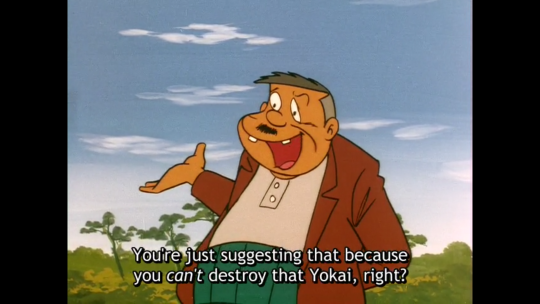
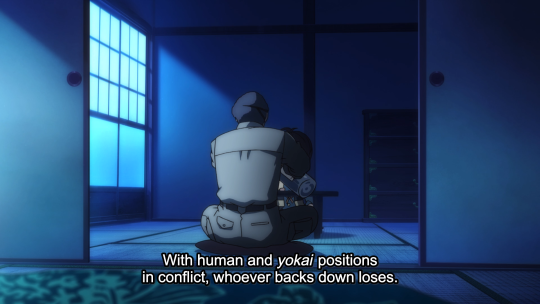

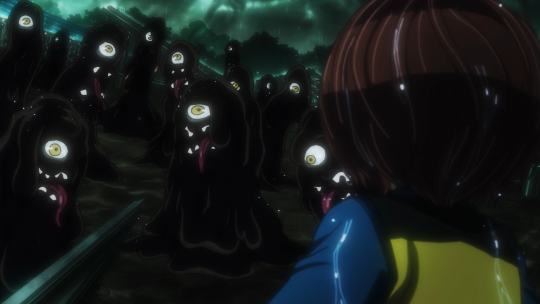

The late Shigeru Mizuki’s Kitaro always was a hard series to get into in English–maybe that’s not too surprising given how heavy it is steeped in Japanese folklore, but for many it always felt unfair to miss out on such a well regarded part of Japanese animation and comics. Recently, this all changed with the newest television series: GeGeGe no Kitaro (2018) finally getting picked up for official simulcast release in North America, Latin America, Australia, New Zealand, South Africa, and Europe. Finally a large portion of the English market can watch Kitaro every week just like the fans in Japan. However this was not the first time that Kitaro came to the English market, so let’s talk about the other mainstream Kitaro release in English: the manga.
In 2013 the Canadian comic publisher Drawn and Quarterly released the conservatively named ‘Kitaro’, a collection of famous Kitaro manga chapters that were hand picked by translator Zack Davisson (Devilman (1972), Captain Harlock (1977), Showa: A History of Japan (1988)) and approved by Mizuki himself. This collection stands at 8.7” tall and 6.4” wide, making it much larger than your average manga volume–just about the same size as Seven Seas’ Classic Collection, for those who may be familiar with those releases. With such large paper, the book really gives Mizuki’s unique artwork the room it deserves and is jam packed with over 430 pages of encyclopedia entries on yokai, essays about Mizuki himself, and of course the manga chapters. Have you ever been curious what the heck “Ge Ge Ge” even is? Well, these essays will finally put that to rest! This book has everything a fan could want, and has been one of my absolute favorites in my entire collection.
Sadly, this particular book has since gone out of print. For the longest time you could still find it on the second hand market (i.e. used through Amazon, eBay, or Barnes and Noble) for a fairly cheap price, but it lately has seemed to gone up quite a considerable amount since last I checked. Is it just a spike for Halloween?–I hope so. But fright not, as ‘Kitaro’ was just the first of many releases Drawn and Quarterly would put out. In 2015, they announced that they will release 7 more volumes worth of Kitaro manga, each containing around 150 pages. The books in these releases are all still in print and can be found anywhere where manga is sold.

This new set of 7 Kitaro volumes starts with ‘The Birth of Kitaro’, where you guessed it, the chapters surrounding Kitaro’s origins is the main focus. Each book continues this pattern where they have at least one major story arc, like ‘Kitaro Meets Nurarihyon’ covering one of Kitaro’s greatest enemies: the Nurarihyon, and ‘Kitaro: The Great Tanuki War’ covering the Tanuki War story arc (fans of the recent 2018 anime should remember this story from episode 11: ‘Conquer Japan! The 808 Tanuki Army’, and episode 12: ‘Capital Annihilated! The Terrifying Yokai Beast’). So far there has been a total of 5 volumes released, with the 2 remaining volumes coming next year. Each volume just like the original 2013 ‘Kitaro’ contains yokai encyclopedia entries, and essays about Mizuki. The subsequent essays in the 5 volumes I have so far as well as the 2013 ‘Kitaro’ have been a large part of my research for these latest blog entries. Essays about the creators and their works are some of my favorite parts about classic manga releases, and these beefy essays by Zack Davisson really don’t disappoint.
I really have to say as a quick aside, that I’ve enjoyed flipping through all these manga volumes again and rereading a lot of the stories to get myself in a Halloween mood–not to mention to also prep for all these recent Zero Frights blog posts. With the 2018 GeGeGe no Kitaro anime now covering The Great Yokai War–and giving it the premium treatment, no less–I have really enjoyed reading that story again in particular, and laughing at the small things. Stuff like how Konaki Jiji drowns Frankenstein’s monster in the original, and how the Witch was just an ugly old hag before, but now we have two, very beautiful witches–which don’t get me wrong, is pretty nice. I really have been enjoying this new modern take on The Great Yokai War, as well as most of the modernization in the show in general, but if Toei wants to bring back Frankenstein’s Monster getting straight up murdered in cold blood by Konaki Jiji who proceeds to give zero fracks, I am game.

There is a part of me that loves that despite the fact that the major staying power of the Kitaro franchise is tied into the many television appearances it has enjoyed over the past 50 years in Japan, that it was the manga that got a wide release in English markets first before any of the animes did. Shigeru Mizuki’s work has always had this mesmerizing nature to it, and while all the animes out there are fantastic and capture a lot of his spirit, there is just something special about the work he did himself; the art he penned, the pages he storyboarded, and the way his Kitaro looks. I can’t get enough of Mizuki’s mangas, and I am really glad that we finally have easy access to them in English. Now if you excuse me, I think I am going to read some more of his work and enjoy what’s left of this spooky time of year. Happy Halloween!
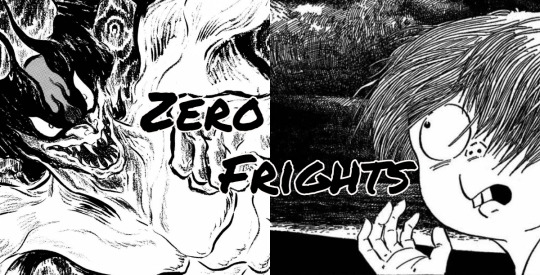
Last week I wrote about all the previous GeGeGe no Kitaro anime series, and went over what made each unique–ultimately saying that what I liked the most about the original 1968 black-and-white TV series was how close it was to the darker atmosphere and macabre tone of the late Mizuki’s comics. While I definitely still defend that opinion that out of the 6 GeGeGe no Kitaros, the very first 1968 series is the most like a Mizuki manga; there is another, different anime that is even closer to the morbid and weird stories often flowing from Mizuki’s pen: Hakaba Kitaro.
Created in 2008 for the late night adult animation block, noitaminA, Hakaba Kitaro is perhaps the most interesting production out of all of the animated works adapting Mizuki. Never before had there been a program that catered to an older audience, so this is definitely not your average GeGeGe no Kitaro anime meant for the younger day time television audience. Right from the opening theme there is an obvious statement being made that thisisnotyourtypicalKitaro. Hakaba Kitaro adapts, well, Hakaba Kitaro (aka Kitaro of the Graveyard), that being one of Mizuki’s many earlier Kitaro manga before eventually creating GeGeGe no Kitaro for Shonen Magazine. Think of it as almost a prototype to GeGeGe no Kitaro, where sharper edges haven’t yet been sanded down, and the tone and atmosphere of the manga is a lot darker, and definitely a bit extreme for children.
Funny enough, big fans of Kitaro will find a lot of GeGeGe no Kitaro in Hakaba Kitaro, as Mizuku would later reuse plenty of the stories from his older, unsuccessful Kitaro manga in GeGeGe no Kitaro to help speed up his writing when deadline crunch became too extreme. That said, while you may spot familiar yokai, and recognize prototypes to famous Kitaro episodes, these characters are not the ones you love; Kitaro is far from a protector of the weak, nor does he really care about peaceful coexistence between human and yokai. He’s petty, conniving, and even chases girls. Throughout the anime you can see him slowly becoming more and more corrupted by “modern” times–Nezumi Otoko trying a get rich scheme is normal, but when Kitaro is concerned about making a quick buck, oh boy are we in trouble.
Kitaro’s transformation throughout Hakaba Kitaro is perhaps one of my favorite aspects of this anime, as right from the beginning this version of the story has no qualms about letting you know Kitaro isn’t a good guy here, he’s just your run-of-the-mil yokai like any other in the series–he doesn’t really possess any aliment, good or bad, but over the course of the 11 episodes you really see him kind of become a worse and worse person. The ending of the series can even be interpreted as such that he and his father, Medama Oyaji, are in the middle of a falling out; something that you would never see in the kind GeGeGe no Kitaro whom has always shown his father the utmost respect.

Kitaro’s journey throughout Hakaba Kitaro can also be seen as a foil to the greater meaning of the entire show itself–that modern life styles and luxuries corrupt. All previous Kitaro series have had somewhat of an environmental message to them, somewhere in all of mankind’s rapid development there has been destroyed greenery and yokai that have lost their homes–but Hakaba Kitaro really shows more of a personal corruption. I always found this super interesting because of the era it is set in, being post-war Japan and not an actual modern time. You can definitely feel some of Mizuki, an ex-WWII soldier, coming home and discovering that everything is different now in Japan. This once quiet and mostly isolated nation is now rapidly expanding and changing with the times once again, all-the-while dealing with one of its worst economic crises because of the war.
Even though I have written a lot about this new version of Kitaro, the funny thing is that Kitaro is far from the main character in Hakaba Kitaro. A lot of times Kitaro is more of a bridging device that ties together episodic yokai stories. Kitaro may just observe certain humans that brought on their own destruction by angering yokai, or he may cause some trouble, but he hardly ever really intervenes in matters that don’t involve him personally. I really enjoy this episodic nature of the series, as it lets a lot of the human “victims-of-the-week” be the main attention of their own episode. Kitaro is just along for the ride, and maybe there to laugh at them too. This give Hakaba Kitaro a great horror anthology feel, where Kitaro is almost like the host, and occasionally the protagonist in certain situations that can involve him.
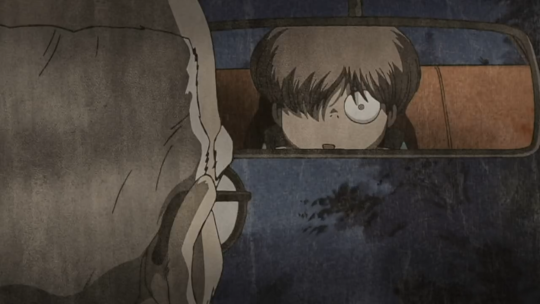
Hakaba Kitaro is the first Kitaro series I’ve ever watched, and to this day, one of my favorite animes, just in general. At 11 episodes it is by far the easiest Kitaro series to watch still, and not too hard to track down (although it’s starting to get a bit harder to find considering its age). For people wanting to get into Kitaro I think it’s a great spot to start, just so long as you understand it’s thematically nothing like the other Kitaro series–you aren’t gonna get anything else this dark or twisted in any of the GeGeGe no Kitaro series, nor will you ever find a Kitaro character like this ever again. But whether or not you’re already a big fan, looking to get into Kitaro finally, or just someone that wants to experience a light, fun, macabre series this Halloween season, I can’t recommend Hakaba Kitaro enough.
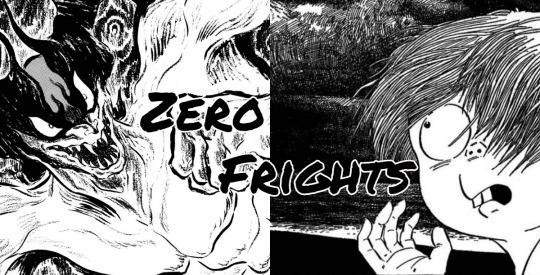
This year marks the 50th anniversary of the original GeGeGe no Kitaro television animated series. This 1968 landmark series was one of the earliest horror themed anime to succeed on Japanese television during a time where the medium was just starting up, and would lead to many other similarly horror/folklore themed series; eventually creating a whole trend for television and manga that some refer to as the 1970’s “Yokai Boom”. The success of Kitaro and his fellow yokai friends could not be ignored and they were brought back again in 1971 right smack dab in the boom they helped started–however it wasn’t until the third time Kitaro and co. reappeared in 1985 did it become apparent that these particular yokai are here to stay–as the fad they ushered in had long since died and Japan had moved on from its rekindled fascination of yokai, yet here they were, still as popular as ever on TV.
While the creation of the Kitaro characters and concepts do in fact predate this 50 year milestone by quite a few years, and the late Shigeru Mizuki’s journey from starving artist, to little known indie creator, to a voice of a nation, is a fascinating one, I will mostly be sticking to this 5 decade milestone for the sake of this blog post. However, if you were to ask me why GeGeGe no Kitaro was able to have the staying power that it did and how it became a staple of Japanese TV, I would have to say it’s because of the late Mizuki’s past as a starving artist. I know, I know, we’re here to mostly talk about the franchise in terms of its television appearances and not the original kamishibai and manga origins prior, but stay with me, because I think this is important.
You see, Mizuki while a mildly popular kamishibai artist, was actually a pretty huge failure as a manga creator. His titles kept getting dropped during the rental manga days, then his later titles in manga magazines–like we have today–were always constantly dead last in the popularity rankings (any Jump fan will tell you this leads to your cancellation), and he had a reputation for being incredibly stubborn to work with. Yet despite literally being on the cusp of poverty, having to sell everything he owns, and barley being able to afford food, Mizuki did not give a shit, he drew what he wanted, despite it not catching on with an audience initially. Mizuki was greatly attached to his creations, and while he wavered here or there and worked on other books, Kitaro was where his heart was, and where he always came back to.
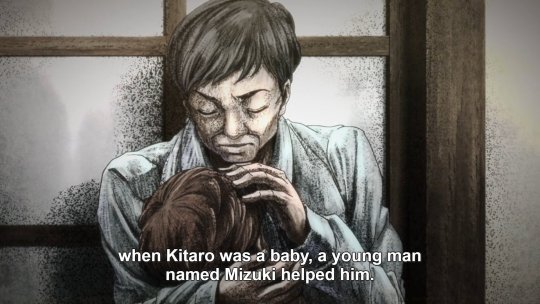
Kids just didn’t gravitate towards to Mizuki’s manga in the early days of his career: his unconventional artwork was considered too ugly and his scary stories were too out there–early on Weekly Shonen Magazine even got letters complaining why Kitaro hasn’t been canceled yet! But this was also Mizuki’s blessing, as industry insiders loved his work, and critics ate it up. His artwork that combined a pulp American comics style with traditional Japanese scroll paintings was fresh, and his focus on something not adventure or super hero related was fresh. Mizuki survived these early days in large because he was able to win these kinds of adults over, and eventually the kids that flipped through the magazines skipping his stuff slowly came around to trying it out again, maybe just a reading it a little bit here and there at first, but eventually enjoying it. Then an opportunity of a lifetime: a TV deal! It wasn’t easy, and took many years, but GeGeGe no Kitaro eventually won people over with its persistence; never succumbing to being something it wasn’t. Mizuki’s creation is something eerie yet exciting, it’s solely its own thing, its own reflection of the unique individual that was Shigeru Mizuki, and isn’t something any imitator can fully mimic–and that’s how you create staying power that goes beyond even your own life time.
My favorite thing about the now 6 different GeGeGe no Kitaro anime is that they each reflect subtle and not so subtle changes in Japan over the years. It would not be a stretch to say that Kitaro can be used as a time capsule. The original 1968 GeGeGe no Kitaro started out when Japanese TV was just getting huge, television anime as we know it only just started 3 years prior with Astro Boy, and animation companies where all rushing trying to get in on the whole television boom. This version of Kitaro is still produced in Black and White, which gives it a gorgeous and eerie look like classic horror movies, and the simpler production values while not stunning still hold up really well. Out of all the episodes from all 6 series I’ve seen, I’d say the original 1968 anime is the most accurate to Mizuki’s manga, with changes here or there, some padding to fill out entire episode run times, and some other aspects being toned down slightly.
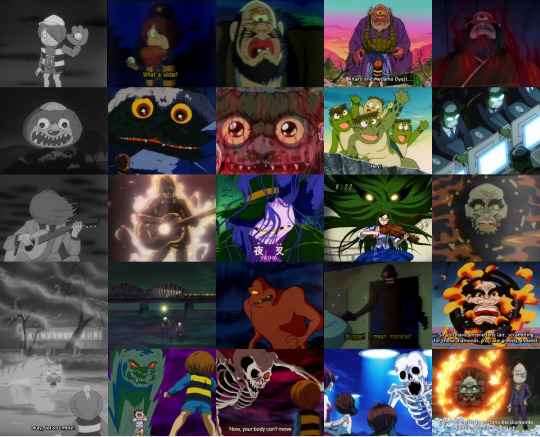
The 1971 GeGeGe no Kitaro series started only a few years after the original, and it’s obvious Toei had two things in mind: not missing out on the Yokai Boom and producing a color version of Kitaro. Because it was so close to the original series this is one of the few Kitaro series that doesn’t rely on remaking classic episodes (those classics were only about 3 years ago after all), and instead adapts a lot of stories from Mizuki’s other works relating to yokai such as Nonnonbaand inserting Kitaro into them. This makes the second series really stick out. The third series in 1985 was the longest in the franchise spanning over 115 episodes and starts modernizing a lot of the classic elements in the Kitaro series, giving Kitaro a human side-kick/love interest of sorts, and some new gadgets–mainly the first appearance of the yokai ocarina, as well as remaking a lot of classic episodes. This is also where the series began recasting every character (sans Kitaro’s father Medama Oyaji) for every new installment. The biggest change is a more action focus and making Kitaro a lot more heroic than previously seen.
For the fourth series in 1996, Kitaro is reverted back to being more subdued and less hot blooded, however he was still given some occasional big fight scenes that the original in the manga could only dream of doing. Per Mizuki’s own request, a greater emphasis is put on the balance of nature and the general aesthetic of the series is inspired by the works of Studio Ghibli. The fifth series in 2007 features the most bitter rendition of Kitaro, who while still polite and trusting, was a lot more apathetic to humans who brought upon their own misfortune because of greed, not flinching to even punish some. This version of Kitaro really plays up the angle that he is an un-aging boy, with references to time passing yet Kitaro’s appearance staying the same. In some cases, instead of telling a remake, certain yokai Kitaro fought in previous series are actually clearly written as sequels, with Kitaro defeating them in the past and having to fight them once again, a unique twist no other series has done yet. My favorite thing with this series though has to be that each episode begins with Kitaro narrating to the audience about something creepy that relates to the episode you’re about to see, a la Rod Sterling.
Finally we have the currently airing sixth series that just started in 2018. So far the biggest theme seems to be about modernization, and how things change over time, covering everything from smart phone overuse to viral internet videos, all the while setting up a bigger story to unfold in the background of the mostly episodic adventures.
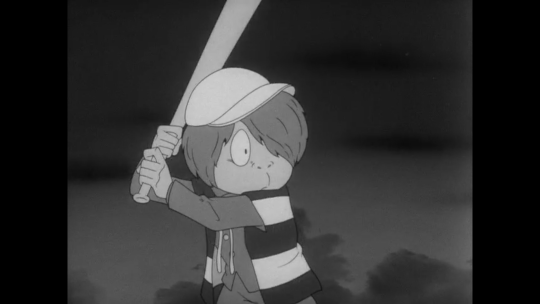
I think the best way to really get a feel for each GeGeGe no Kitaro series though is through their first episodes. After marathoning–to the best of my abilities–a lot of the classic series I wasn’t too familiar with, I’ve found myself enjoying seeing what manga chapter each will try to start on. It became some what of a game to me going back and forth through each decade to see what the earliest episodes of each series wanted to start with. The original 1968 Kitaro for example starts on the Yokai Baseball chapter. While not a bad chapter at all (it’s quite morbid and funny, really), it’s far from what I was expecting! But it makes a lot of sense for its time, where Kitaro wasn’t quite a sure thing, so instead of starting on a more intense episode, the series begins with a pretty tame cautionary tale about hard work and not stealing–all while watching little boys get the crap scared out of them because they’re playing baseball against actual monsters!
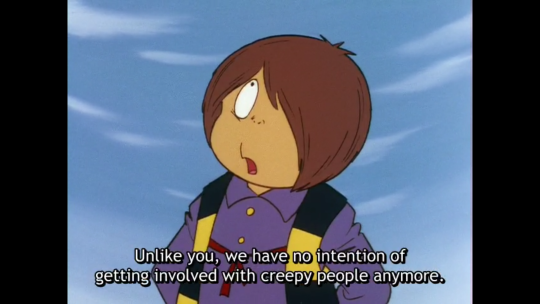
The first episode in the second series from 1971 is equally as fascinating, as while it’s a pretty run-of-the-mil story about a rampaging yokai that lost its home because of human development, it’s the little things that set it apart. The very start of the episode features Kitaro’s ultimate frenemy Nezumi Otoko desperately searching for Kitaro, giving the impression that he’s been missing since the end of the original series. What Nezumi finds though is that Kitaro is done with fighting yokai and just wants to live a simple life writing haiku by the sea–almost as if he’s washed up and a has-been now, yet he is of course brought back into being the hero we know.

The 1985 series’ first episode starts out as bombastic as it can with the Yokai Castle manga chapter; a huge battle against 3 strong yokai that try to turn all the children of Japan into yokai. This first episode kicks so much ass, Kitaro just wastes no time and rushes in to some great fights. What really impressed me is this usually appears a bit later in most series after we’ve met a couple of Kitaro’s friends so he can have help taking on the Yokai Castle, but here it is right from the start! Sunakake Babaa, Konaki Jijii, and Ittan Momen do eventually come in at the end for a save but otherwise this is mostly Kitaro just whopping butt right from the word go, complete with awesome 80’s guitar music in the background.

The first episode in the 1996 series is a lot more tame in compassion and doesn’t even feature Kitaro for the first half of the episode, instead focusing on the new human characters introduced with this iteration. Of course when things finally go bad Kitaro makes his appearance and rescues everyone. The environmental message is clear right from the beginning since it’s that darn evil construction company that let out the yokai of this episode and over all everything is much slower paced and more reserved compared to the boisterous 1985 series’ beginning. That’s not to say there isn’t a good fight at the end though, but the atmosphere of a quaint town in the 90’s is the most prevalent feeling.
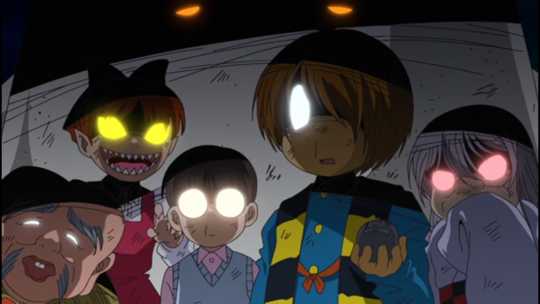
GeGeGe no Kitaro’s 2007 series starts with a first episode that shows Kitaro’s more bitter side as three dumb kids disturb a shrine and let out a yokai–it’s up to Kitaro to bail them out. It’s not unusual in any Kitaro series for him to have to save stupid kids, (I mean this is a thing) but I do find it somewhat amusing that the series with the most bitter Kitaro started with kids committing property damage for funsies and then were too headstrong to send for help most of the episode. This episode is unfortunately a bit of a mess however, as much of it is dedicated to shoehorning in every major character in the series, which makes it overly stuffed, and overall the yokai of the week was far from that intimidating to really call for every member of Kitaro’s group to be present. This does sort of tie into an emphasis that the 2007 series had on showing tons of yokai and their daily lives though since in this series all the yokai live together in their own city.
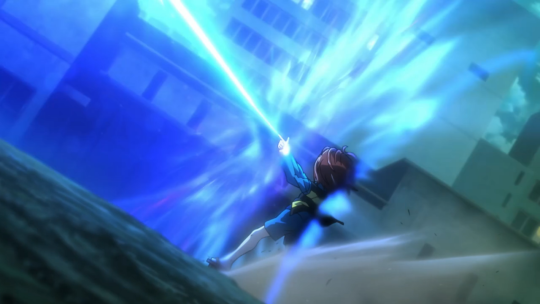
Finally we have the current series running now, with its first episode also having some really dumb kids in it, but this time done much better. As it turns out a seal was removed unleashing a yokai all because of a dumb vlogger causing trouble for a YouTube video (*cough**cough*) The vampire tree made for some really great visuals in this episode, and a lot of time is dedicated explaining both the new human heroine Mana and our favorite old buddy Kitaro’s personalities and back stories. You really get to know both pretty well in this episode, and it ends with great set up for the original main villain created for this series that has been subtly building up over the course of the show ever since.
Overall, after watching so much GeGeGe no Kitaro I really gained a greater appreciation for the franchise as a whole. Seeing how much it reflects each decade since its original airing is really fun, and trying to find which series you like the most is a great challenge. I still just can’t decide! I love the currently modernized version of Kitaro running on TV right now, it’s easily the best animation and presentation the series has ever had (are we sure this is the same Toei we’ve always known?) and never talks down to its child audience, but I also feel like the 1968 Kitaro series has the perfect atmosphere and aesthetic that none of the other series have been able to match! Then there’s the 1985 series that really makes my blood boil with its incredibly awesome 80’s rock ‘n roll soundtrack and awesome action. I’m not sure if I’ll ever be able to pick just one! Do you have a favorite GeGeGe no Kitaro? Let’s hear it.

It’s October 1 today and Halloween already feels like it’s around the corner. For me October marks the start of one of my favorite times of the year–fall weather is a welcome relief from the summer heat, the seasonal food is fantastic, and everybody is a little spookier than normal. It’s just the right time of year to get cozy and enjoy something creepy. That’s why for the past couple years I’ve desperately wanted to do something horror themed for my blog and sadly I have always fallen short. Last year we got to look at the creepy Kamaitachi no Yoru, but that was just one review and not the celebration of the spooky scaries that I’ve always wanted.
That’s why I doubled down this year and decided to go all in on a new series of reviews. This is a bit of an experiment to say the least, and I’m not sure if any of this will make it to next year, but I want to try to keep throwing out spooky content until something sticks–thus Zero Frights is now born. Zero Frights will be a series of shorter reviews on horror themed anime and video games that I cover all through the month of October. This means that instead of my usual one or two large reviews a month I am going to be releasing a bunch of smaller ones. How many? Well it’s actually kind of hard to say at this point, I’m just making it all up as I go along.
This is the basic concept I decided to go with, however for this year I am already going to make an exception. Yeah, I know, I just started and I got excuses! It’s just that this year is a bit different from most as 2018 marks two hugely important 50th anniversaries: the anniversary of Go Nagai starting his manga career, and the anniversary of the first GeGeGe no Kitaro TV anime from 1968. It was because of this that both Nagai and Mizuki got the red carpet treatment in 2018 with both creators getting brand new animes: the Mazinger Z Infinity film, Cutey Honey Universe, & Devilman Crybaby for Nagai’s 50th, and the brand new ongoing GeGeGe no Kitaro for its anniversary.

Devilman and Kitaro are two huge franchises that I love and have always wanted to do something with for Halloween so I am instead going to put all my focus into just these two this year because of these anniversaries. That unfortunately means the very first (and maybe only) Zero Frights is going to lack any video game content. If this ever goes beyond just this year I will try to make up for that in the future.
So to get everyone up to pace I will just give a quick rundown of both Devilman and GeGeGe no Kitaro’s histories. Let’s start with Devilman because why not.
Devilman is a series from famous manga creator Go Nagai, best known for his big 3 franchises: Mazinger, Cutey Honey, and you guessed it: Devilman (no coincidence all 3 got new anime to celebrate his career milestone this year). But Nagai is perhaps even more well known for his love of pushing the envelope and creating new controversies to enrage parents across Japan. Sometimes Nagai was shock value for shock value’s sake but other times he could be deeply moving and really beautiful. Whatever the case though, if you picked up a manga from Nagai it was gonna be absolutely grotesque, hyper violent, and full of tits. That’s Uncle Go for you.

Devilman started as an anime and manga series simultaneously in 1972, and was more or less Nagai remaking an earlier canceled manga Mao Dante (otherwise known as Demon Lord Dante). In both Mao Dante and Devilman Nagai wanted to show how good and evil aren’t always clear, and while nowadays we have a multitude of angels are the bad guys stories (SMT loves that especially) for 1972 in a children’s manga magazine this was pretty groundbreaking stuff. Most classic anime fans agree that Devilman and the earlier Mao Dante are some of the most influential groundworks for apocalyptic narratives in anime today.
I covered a lot of information about the late Shigeru Mizuki and Kitaro earlier in a blog post I wrote dedicated to Mizuki after his passing in 2015, but since then I have learned a lot more about about both and I don’t particularly like that post much now. If you don’t want to skim it I think the best way to sum up Mizuki is the father of modern yokai stories. Mizuki helped to popularize yokai in a post-WWII Japan where silly old folk stories and superstitions were deemed too old hat for the (then) modern era. Mizuki was able to make yokai popular again and because of that it started the yokai boom in the 70’s where it seemed everyone wanted to have a yokai anime or manga: with imitators like Yokai Ningen Bem,Dororo, and Dororon Enma-kun (from none other than Go Nagai himself).

What separates Mizuki from all his imitators though is that the man was a living, breathing yokai encyclopedia. Literally! He wrote multiple encyclopedias about yokai, and these are not just fun little anime merch, but real, actual academic encyclopedias. He was considered to be an expert on the subject and his depictions of yokai have ended up becoming some of the default art work for them in modern times. Mizuki’s work at depicting yokai in of itself has had huge affects on lots of creators. Kazuma Kaneko the main artist for much of the Shin Megami Tensei series found a lot of his inspiration for demon designs from Mizuki’s encyclopedias for example.
GeGeGe no Kitaro itself is perhaps one of the earliest horror themed animated series to air in Japan but the road to getting there was actually rough. Kitaro went through a lot of transformations or earlier prototypes, if you will, over the years to reach that point. Before GeGeGe no Kitaro there was the more morbid Hakaba Kitaro (or Kitaro of the Graveyard). This was considered too scary for children though, and Mizuki was able to tone down some aspects of this manga and find just the right mix of horror and action to make his yokai knowhow into the money maker we know today. Kids ate it up and ever since then Kitaro has enjoyed success on TV for over 50 years. Every decade sees a new series, a new generation to grow up with these characters, and we are now in the middle of the most current Kitaro anime on TV. Kitaro isn’t stopping any time soon even after Mizuki’s passing.
The latest episode (ep 23 The Yokai Apartment Secret Story) of the 2018 GeGeGe no Kitaro series was able to fit in a really nice little reference to past series. In said episode there are multiple flashbacks to events Kitaro was involved with in the past. The three time periods these flashbacks take place in all occurred during the year previous Kitaro anime aired.
This was just such a nice little thing to see in the episode that I wanted to make a quick post about it!
Post link
News-Drawn & Quarterly announced on their Twitter that they will be reprinting their first Kitaro(akaGegege no Kitaro) manga collection, after it being out of print for years now! The reprint will also have a newly designed cover to match with their other Kitaro collected books. The stories in this collection do not overlap with any of the others, so if you’ve been buying the Kitaro books, be sure to add this one to your collection as well! This new edition is set to hit stores Feb 20, 2023.
Post link
What if I told you there was a lost Gegege no Kitaro fan film?
(鬼太郎座女禍) was a fan film produced by the doujin distributor “La Moon.” Little to no information about this movie is in English, making research difficult. However, according to the sources I could find, animators who worked on the third and fourth anime helped contribute to this film! The film was a type of motion-comic, using single cels to animate the story in a slideshow fashion.
Hopefully it can be found someday!
The article has been written!!! Please give it a read!!!
Huge thanks to my friend @thelilithmachine for translating the plot section of the film!! I wouldn’t have been able to finish this article without her!
Post link
Steven catching shrimp like nobody’s bissuness. #kitaro #hibachi #japanesebistro #shrimp #fishfryfriday #noms (at Kitaro Bistro of Japan)
landscapeofadjacentpossibility:
Screen-Capture(s) of the Week:
Gegege no Kitarou (2018) #05.
「電気妖怪の災厄」
(”The Disaster of the Electric Yokai“)
Post link
The Silk Road Photo Collection 3 Volumes Set (Japan Broadcast Publishing Co.,Ltd/Citibank 1981)
Post link
The Silk Road- An Ancient World of Adventure 10th Anniversary Limited Edition Collection Boxset 3 Discs DVD (Central Park Media 2002)
Post link




